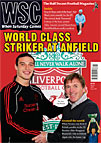 Neil White worries that those at the top of the Scottish game have got their priorities all wrong
Neil White worries that those at the top of the Scottish game have got their priorities all wrong
Such is the Scottish Premier League’s expertise in debacle, you have to respect the fact that their current blind stumble towards some kind of undefined “change” has lowered the organisation’s stock among its customers still further.
This is the enterprise that incorporated the wacky mid-season split that can – and has – seen the team in seventh place finish with more points than the one in sixth, yet been denied a late-season run to the European places by a glass ceiling fitted to ensure a 12-team league coughs up the required amount of fixtures. And, as will become clear, when the SPL say “fixtures”, it means “Old Firm fixtures”.
This is the league with the lowest ratio of teams (one from 12) relegated in all of Europe. At the other end, the 25-year dominance of its two Glaswegian behemoths has become an international standard for non-competition.
And let’s not forget the decision-making at the top. These are the men who decided 10,000-seat stadiums should be a deal-breaker for entry, then flip-flopped on that rule when they had to start refusing the one promotion spot that was on offer to the champions of Division One. Most damning, given the nature of their argument for their kind of “change”, these are the men who made the most costly call of all – to take a top-loaded deal from an unproven broadcaster, Setanta, over a more evenly-spread contract with the biggest name in sports broadcasting in the UK, Sky.
At every turn, the SPL has opted to protect its members at the cost of competition, to take the fast buck over long-term stability and, heaven forbid, sporting integrity. Within the proposals put forward so far, there are elements that would score an easy majority among supporters. An earlier start to the season and a winter break would, hopefully, reduce the downtime endured last December, for example. An increase in the number of relegation spots is a must for a number of reasons, sporting and economic, and the new SPL would have a bigger trapdoor.
However, the set-up the league is trying to sell its members is a ten-team top division with a 12-team second tier. That has been amended after plans for a ten-ten system could not gain sufficient support at a meeting of member clubs, several of whom remain opposed to a ten-team league that goes against the wishes of the vast majority of those supporters who have made their opinions known.
Terry Butcher, the manager of Inverness Caledonian Thistle, has complained of bullying tactics being used to drive through proposals, and the dominance of the Old Firm in the politics of the league. Motherwell released a statement outlining the need to consider the popular support for the expansion of the league, a view favoured also by St Mirren and Dundee United.
In the debate around this issue, the language used by the league has become stripped down to something approaching the truth. In an interview with the BBC, Neil Doncaster, the SPL chief executive, said: “We’d all like to see a bigger league, but financially it can’t happen. We’d lose a Celtic v Rangers game. We’d lose a Hibs v Hearts game. Do you want your club to be receiving £1 million less a year?”
Doncaster’s second point is the crux of the issue. The Old Firm fixture is the big draw for broadcasters. Colin Davidson, who produced Scottish football for Sky and Setanta, recently talked about three categories of games: Rangers v Celtic; Rangers or Celtic v anyone else; and finally, teams who are neither Rangers nor Celtic playing each other. The drop-off in interest for broadcasters after the first category is, suggested Davidson, pretty steep.
On Doncaster’s final point, a drop in revenue of £1m is almost exactly equivalent to that imposed on member clubs by the SPL’s decision to gamble on Setanta’s explosive business plan. The offer that Sky came back with after the collapse of the SPL’s primary broadcast partner was around half of that which they had tabled in competition with Setanta’s get-rich-quick scheme.
Gordon Smith, the former chief executive of the Scottish FA, put it bluntly: “They [the SPL] won’t listen to the fans. This is a business decision. It has nothing to do with football as such.” There is a wider debate to be had, one that has broader parameters and requires greater imagination. Supporters want more teams in the top division because they do not want to see the same teams visit their stadiums four or more times in a season. Managers, such as Hamilton’s Billy Reid, want more teams so they can stabilise their club in a middle tier of the SPL and develop their young players once they have earned their safety for
another season.
The more teams doing it that way, and the more emerging from outside the debt-ridden old-money of the SPL, the better the players in the league will be and the stronger the competition. A team from outside
Glasgow may even be able to win the thing one day.
And, if not, if all we are left with is a 16-team league that is worth less to broadcasters than it is to supporters, then maybe that is what Scottish football is worth. Let’s strip it down and start again. The bar is pretty low, after all.
From WSC 289 March 2011